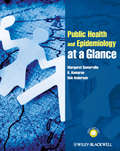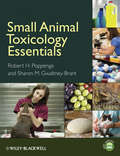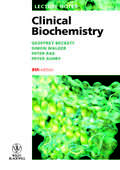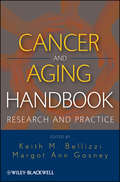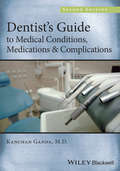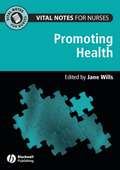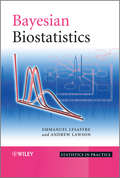- Table View
- List View
Transplantation at a Glance (PDF)
by Menna Clatworthy Christopher Watson Michael Allison John DarkThe first basic overview of all aspects of transplantation with a clarity not to be found in more inaccessible textbooks. This brand new title provides a succinct overview of both the scientific and clinical principles of organ transplantation and the types of organ transplant, featuring highly-illustrated information covering core topics in transplantation including: * Organ donors * Organ preservation * Assessment of transplant recipients * Indications for transplantation * Immunology of transplantation * Immunosuppression and its complications * Overviews of thoracic and abdominal organ transplantation, including the kidneys, liver, heart and lungs Transplantation at a Glance is the ideal introduction for medical students, junior doctors, surgical trainees, immunology students, pharmacists, and nurses on transplant wards.
Transplantation at a Glance (At a Glance)
by Menna Clatworthy Christopher Watson Michael Allison John DarkThe first basic overview of all aspects of transplantation with a clarity not to be found in more inaccessible textbooks. This brand new title provides a succinct overview of both the scientific and clinical principles of organ transplantation and the types of organ transplant, featuring highly-illustrated information covering core topics in transplantation including: Organ donors Organ preservation Assessment of transplant recipients Indications for transplantation Immunology of transplantation Immunosuppression and its complications Overviews of thoracic and abdominal organ transplantation, including the kidneys, liver, heart and lungs Transplantation at a Glance is the ideal introduction for medical students, junior doctors, surgical trainees, immunology students, pharmacists, and nurses on transplant wards.
Public Health and Epidemiology at a Glance (At a Glance #72)
by Margaret Somerville K. Kumaran Rob AndersonThis brand new title in the market-leading at a Glance series provides a highly-illustrated, visual introduction to the key concepts of population-level disease prevention. Accessible, double-page spreads help you understand and appreciate the determinants of health which impact on healthcare services and their effectiveness. Public Health and Epidemiology at a Glance features high-yield information on all the topics covered at medical school, including: Measurement of population health Epidemiological concepts of cause and association, surveillance, and risk Use of epidemiology in clinical decision-making Epidemiology of major health problems such as cardiovascular disease and cancer Health promotion Basics of health economics Basics of health policy, needs assessment, and evaluation Also featuring self-assessment questions to help test learning, this new title will provide an invaluable resource for medical and healthcare students, junior doctors, and those preparing for a career in public health.
Targets and Emerging Therapies for Schizophrenia
by Jeffrey S. AlbertNew and emerging directions in pharmaceutical research to better treat schizophrenia Although the dopamine hypothesis has been the cornerstone of schizophrenia therapeutics, it is clear that dopamine-based approaches do not treat all aspects of the disease. Moreover, many schizophrenia patients fail to respond to current antipsychotics. Integrating chemistry, biology, and pharmacology, this book explores emerging directions in pharmaceutical research for drug targeting and discovery in order to find more effective treatments for schizophrenia, one of the most serious and widespread psychiatric diseases. Targets and Emerging Therapies for Schizophrenia presents the basics of schizophrenia, drug targets for the disease, and potential new drugs and therapeutics. It begins with a discussion of prevalence and etiology. Then, it describes therapies such as dopamine agonists and phosphodiesterase (PDE) inhibitors as well as growing research aimed at addressing untreated symptoms. Next, the authors discuss receptor modulators, inhibitors, and targeting strategies for drug discovery. Both the neurobiological and chemical aspects of all major pharmacological targets are examined. With contributions from an international team of pioneering pharmaceutical researchers, this book compiles the current knowledge in the field, setting the stage for new breakthroughs in the treatment of schizophrenia. Targets and Emerging Therapies for Schizophrenia: Provides a comprehensive resource for neuro-drug discovery and the development of molecular targets for schizophrenia treatment Draws from chemistry, biology, and pharmacology for more effective drug targeting and discovery Explores a wide range of receptors and molecular targets, including dopamine, PDEs, and neuropeptides With Targets and Emerging Therapies for Schizophrenia as their guide, drug discovery and development scientists have the information they need to advance their own research so that new, more effective treatments for schizophrenia will soon be a reality.
Targets and Emerging Therapies for Schizophrenia
by Jeffrey S. AlbertNew and emerging directions in pharmaceutical research to better treat schizophrenia Although the dopamine hypothesis has been the cornerstone of schizophrenia therapeutics, it is clear that dopamine-based approaches do not treat all aspects of the disease. Moreover, many schizophrenia patients fail to respond to current antipsychotics. Integrating chemistry, biology, and pharmacology, this book explores emerging directions in pharmaceutical research for drug targeting and discovery in order to find more effective treatments for schizophrenia, one of the most serious and widespread psychiatric diseases. Targets and Emerging Therapies for Schizophrenia presents the basics of schizophrenia, drug targets for the disease, and potential new drugs and therapeutics. It begins with a discussion of prevalence and etiology. Then, it describes therapies such as dopamine agonists and phosphodiesterase (PDE) inhibitors as well as growing research aimed at addressing untreated symptoms. Next, the authors discuss receptor modulators, inhibitors, and targeting strategies for drug discovery. Both the neurobiological and chemical aspects of all major pharmacological targets are examined. With contributions from an international team of pioneering pharmaceutical researchers, this book compiles the current knowledge in the field, setting the stage for new breakthroughs in the treatment of schizophrenia. Targets and Emerging Therapies for Schizophrenia: Provides a comprehensive resource for neuro-drug discovery and the development of molecular targets for schizophrenia treatment Draws from chemistry, biology, and pharmacology for more effective drug targeting and discovery Explores a wide range of receptors and molecular targets, including dopamine, PDEs, and neuropeptides With Targets and Emerging Therapies for Schizophrenia as their guide, drug discovery and development scientists have the information they need to advance their own research so that new, more effective treatments for schizophrenia will soon be a reality.
Small Animal Toxicology Essentials
by Robert H. Poppenga Sharon M. Gwaltney-BrantProviding a ready reference for the initial triage, collection of diagnostic samples, and management of a poisoning case, Small Animal Toxicology Essentials focuses on the most common poisons encountered by companion animals. From prevention to evaluation, monitoring, and treatment, the book is a guide for veterinary technicians to differentiate between significant and insignificant exposures and effectively manage animal poisonings. Emphasizing clinical signs, differential diagnoses, and case management, the book begins with the principles of veterinary toxicology, such as terminology, history-taking, and decontamination. The second half of the book is devoted to specific toxicants, including plants, metals, drugs, and household poisons. A companion website at www.wiley.com/go/poppenga provides review questions in Word and color images available for download into PowerPoint. Small Animal Toxicology Essentials is a useful resource for veterinary technicians, especially those with a interest in emergency and critical care, and veterinary technician students, as well as practicing veterinarians looking for an introduction to toxicology.
Lecture Notes: Immunology (Lecture Notes #68)
by Ian Todd Gavin SpickettThis introductory text provides a student-friendly review of essential immunity and immunopathology topics. Key concepts are introduced in an incremental fashion to provide a thorough overview of the field. Closely tailored to the undergraduate immunology curriculum, Part 1 outlines basic immunology, while Part 2 covers more disease-related and clinical aspects. The new edition of this popular title features a fully updated overview of the roles and regulation of the cells and molecules of the immune system. Key point summaries have been expanded, and key objectives added to the start of each chapter, to help the reader focus on the essential ‘take-home’ messages. Readers can then test themselves using the brand new self-assessment section containing problem-solving questions and extended matching questions (EMQs). Including simple, memorable illustrations and quick reference tables, Lecture Notes: Immunology provides the perfect distillation of information for easy recall at revision time, and is ideal for both the novice and those with some prior knowledge of the field.
Lecture Notes: Clinical Biochemistry (Lecture Notes #69)
by Geoffrey Beckett Simon W. Walker Peter Rae Peter AshbyThe new edition of the best-selling Lecture Notes title is a concise introduction to clinical biochemistry that presents the fundamental science underpinning common biochemical investigations used in clinical practice. Lecture Notes: Clinical Biochemistry allows the reader to make efficient and informed use of the diagnostic services offered by their clinical biochemistry department. The result is a text that serves as a reference to the practitioner as well as the student. The book takes a system-based approach, with the underlying physiological rationale for any test explained in the context of disruption by disease. This leads naturally to an integrated and practical understanding of biochemical diagnostics. Including multiple choice questions (MCQs) alongside end-of-chapter case studies to help develop test-selection skills, Lecture Notes: Clinical Biochemistry provides the essential background to biochemical investigations and is an ideal course companion and revision guide for medical students, junior doctors on the Foundation Programme, general practitioners, and nurses and laboratory technicians.
Lecture Notes: Neurology (Lecture Notes #70)
by Lionel GinsbergNow in two colours throughout, this new edition of Lecture Notes: Neurology contains the core neurological information required, whichever branch of clinical medicine you choose. Reflecting current clinical practice, the latest advances in the diagnosis and management of neurological diseases are concisely covered. The book is divided into two parts. The Neurological Approach looks at neurological history taking. The neurological examination is then discussed in detail – consciousness, cognitive function, vision and other cranial nerves, motor function, sensation and autonomic function. In part two, Neurological Disorders, the common neurological conditions are described, along with neurological emergencies and neuro-rehabilitation. Featuring a self-assessment section, and with clinical scenario and key points boxes throughout, Lecture Notes: Neurology is ideal for medical students, junior doctors, and specialist nurses who want a concise introduction to clinical neurology that can be used as a core text or as a revision resource.
ABC of Pain (ABC Series #218)
by Lesley A. Colvin Marie FallonChronic pain is a very common problem, impacting on many patients. Assessment and management can be challenging. The ABC of Pain focuses on the pain management issues often encountered in primary care. Covering major chronic pain presentations, such as musculoskeletal pain, low back pain and neuropathic pain, the ABC of Pain also provides guidance on the management of pain in pregnancy, children, older adults, drug dependency and the terminally ill. Beginning with an overview of the epidemiology of chronic pain, pain mechanisms and the assessment of pain, it then provides practical guidance on interventional procedures and methods of effective pain management. The ABC of Pain is a comprehensive, evidence-based reference. It is ideal for GPs, junior doctors, nurse specialists in primary care, palliative care specialists, and also hospital and hospice staff managing chronically and terminally ill patients.
ABC of Pain (ABC Series #221)
by Lesley A. ColvinChronic pain is a very common problem, impacting on many patients. Assessment and management can be challenging. The ABC of Pain focuses on the pain management issues often encountered in primary care. Covering major chronic pain presentations, such as musculoskeletal pain, low back pain and neuropathic pain, the ABC of Pain also provides guidance on the management of pain in pregnancy, children, older adults, drug dependency and the terminally ill. Beginning with an overview of the epidemiology of chronic pain, pain mechanisms and the assessment of pain, it then provides practical guidance on interventional procedures and methods of effective pain management. The ABC of Pain is a comprehensive, evidence-based reference. It is ideal for GPs, junior doctors, nurse specialists in primary care, palliative care specialists, and also hospital and hospice staff managing chronically and terminally ill patients.
Fundamentals of Applied Pathophysiology: An Essential Guide for Nursing and Healthcare Students (Fundamentals Ser.)
by Muralitharan Nair Ian PeateFundamentals of Applied Pathophysiology is designed specifically for nursing and healthcare students, providing a straightforward, jargon-free, accessible introduction to pathophysiology. Highly visual and written specifically for students, the second edition of this best-selling textbook provides clear explanations of the anatomy of the human body, and the effects of disease or illness on normal physiology. To make study easier, the book includes learning outcomes, a range of activities to test learning, key words, end-of-chapter glossaries, and clinical case scenarios, and is supported by an online resource centre with further activities and exercises. Key Features: Superb full colour illustrations, bringing this subject to life Full of extra features to help improve the learning process, including key words, test-your-knowledge, exercises, further reading and learning outcomes New case studies throughout to help you understand how to apply the knowledge in clinical practice Supported by an online resource centre at www.wiley.com/go/fundamentalsofappliedpathophysiology with fantastic extras for both lecturers and students, including an image bank, interactive multiple choice questions, true/false exercises, word-searches, glossary flash-cards, label-the diagram activities, and more!
Fundamentals of Applied Pathophysiology: An Essential Guide for Nursing and Healthcare Students
by Muralitharan Nair Ian PeateFundamentals of Applied Pathophysiology is designed specifically for nursing and healthcare students, providing a straightforward, jargon-free, accessible introduction to pathophysiology. Highly visual and written specifically for students, the second edition of this best-selling textbook provides clear explanations of the anatomy of the human body, and the effects of disease or illness on normal physiology. To make study easier, the book includes learning outcomes, a range of activities to test learning, key words, end-of-chapter glossaries, and clinical case scenarios, and is supported by an online resource centre with further activities and exercises. Key Features: Superb full colour illustrations, bringing this subject to life Full of extra features to help improve the learning process, including key words, test-your-knowledge, exercises, further reading and learning outcomes New case studies throughout to help you understand how to apply the knowledge in clinical practice Supported by an online resource centre at www.wiley.com/go/fundamentalsofappliedpathophysiology with fantastic extras for both lecturers and students, including an image bank, interactive multiple choice questions, true/false exercises, word-searches, glossary flash-cards, label-the diagram activities, and more!
Wiley Pathways Introduction to U.S. Health Care: The Structure of Management and Financing of the U.S. Health Care System
by Dennis D. Pointer Steve Williams Stephen L. Isaacs James R. Knickman Tracy BarrAs the business side of the health care industry explodes to well over half a million jobs this year, students need to understand the U.S. health system, management concepts, and the topics that are driving its future. In a clutter-free format, with every day language, this text helps students comprehend how the health care system is organized, the basic business concepts that are specific to health care administration and management, and how the concepts apply to real world situations. With the help of numerous case studies, examples, clear explanations, and problems to solve, students will learn how the U.S. health services system is structured, managed, and financed.
Pediatric Drug Development: Concepts And Applications
by Andrew E. Mulberg Dianne Murphy Julia Dunne Lisa L. MathisMost medicines have never been adequately tested for safety and efficacy in pediatric populations and preterm, infants and children are particularly vulnerable to adverse drug reactions.Pediatric Drug Development: Concepts and Applications, Second Edition, addresses the unique challenges in conducting effective drug research and development in pediatric populations.This new edition covers the legal and ethical issues of consent and assent, the additional legal and safety protections for children, and the appropriate methods of surveillance and assessment for children of varying ages and maturity, particularly for patient reported outcomes. It includes new developments in biomarkers and surrogate endpoints, developmental pharmacology and other novel aspects of global pediatric drug development. It also encompasses the new regulatory initiatives across EU, US and ROW designed to encourage improved access to safe and effective medicines for children globally.From an international team of expert contributors Pediatric Drug Development: Concepts and Applications is the practical guide to all aspects of the research and development of safe and effective medicines for children.
Pediatric Drug Development
by Andrew E. Mulberg Dianne Murphy Julia Dunne Lisa L. MathisMost medicines have never been adequately tested for safety and efficacy in pediatric populations and preterm, infants and children are particularly vulnerable to adverse drug reactions.Pediatric Drug Development: Concepts and Applications, Second Edition, addresses the unique challenges in conducting effective drug research and development in pediatric populations.This new edition covers the legal and ethical issues of consent and assent, the additional legal and safety protections for children, and the appropriate methods of surveillance and assessment for children of varying ages and maturity, particularly for patient reported outcomes. It includes new developments in biomarkers and surrogate endpoints, developmental pharmacology and other novel aspects of global pediatric drug development. It also encompasses the new regulatory initiatives across EU, US and ROW designed to encourage improved access to safe and effective medicines for children globally.From an international team of expert contributors Pediatric Drug Development: Concepts and Applications is the practical guide to all aspects of the research and development of safe and effective medicines for children.
Cancer and Aging Handbook: Research and Practice
by Keith M. Bellizzi Margot GosneyA state-of-the-art, multidisciplinary approach to cancer and aging With the majority of cancers occurring in individuals over the age of 65 against a backdrop of an expanding aging population, there is an urgent need to integrate the areas of clinical oncology and geriatric care. This timely work tackles these issues head-on, presenting a truly multidisciplinary and international perspective on cancer and aging from world-renowned experts in geriatrics, oncology, behavioral science, psychology, gerontology, and public health. Unlike other books on geriatric oncology that focus mainly on treatment, Cancer and Aging Handbook: Research and Practice examines all phases of the cancer care continuum, from prevention through evidence-based diagnosis and treatment to end-of-life care. Detailed clinical and research information helps guide readers on effective patient care as well as caregiver training, research, and intervention. Coverage includes: Epidemiology of cancer in older adults, plus the unique physical, mental, and social issues involved Strategies and guidelines for prevention, screening, and treatment of older individuals with cancer The most common cancers in the elderly, including breast, colorectal, lung, prostate, and ovarian cancer Cancer survivorship in older adults as well as the all-critical issues of palliative care and pain management Emerging topics such as caregiver and family issues, different models of care, and cost considerations An essential resource for clinicians and caregivers as well as researchers interested in this evolving field, Cancer and Aging Handbook is also useful for public health professionals and policymakers who need to formulate services and allocate resources for the growing population of older cancer patients.
Cancer and Aging Handbook: Research and Practice
by Keith M. Bellizzi Margot GosneyA state-of-the-art, multidisciplinary approach to cancer and aging With the majority of cancers occurring in individuals over the age of 65 against a backdrop of an expanding aging population, there is an urgent need to integrate the areas of clinical oncology and geriatric care. This timely work tackles these issues head-on, presenting a truly multidisciplinary and international perspective on cancer and aging from world-renowned experts in geriatrics, oncology, behavioral science, psychology, gerontology, and public health. Unlike other books on geriatric oncology that focus mainly on treatment, Cancer and Aging Handbook: Research and Practice examines all phases of the cancer care continuum, from prevention through evidence-based diagnosis and treatment to end-of-life care. Detailed clinical and research information helps guide readers on effective patient care as well as caregiver training, research, and intervention. Coverage includes: Epidemiology of cancer in older adults, plus the unique physical, mental, and social issues involved Strategies and guidelines for prevention, screening, and treatment of older individuals with cancer The most common cancers in the elderly, including breast, colorectal, lung, prostate, and ovarian cancer Cancer survivorship in older adults as well as the all-critical issues of palliative care and pain management Emerging topics such as caregiver and family issues, different models of care, and cost considerations An essential resource for clinicians and caregivers as well as researchers interested in this evolving field, Cancer and Aging Handbook is also useful for public health professionals and policymakers who need to formulate services and allocate resources for the growing population of older cancer patients.
Obstetrics and Gynaecology (Oxford Medical Handbooks Ser.)
by Lawrence Impey Tim ChildObstetrics & Gynaecology has established itself as a key recommendation for faculty and a firm favourite for health sciences students. The opening sections of this new edition incorporate the relevant basic science, history and examination, investigations and diagnosis, as well as common diseases, abnormalities, and complications in gynaecology and obstetrics respectively. These are supported by two unique sections on gynaecology and obstetrics management, which are tailored to help students revise for exams, especially OSCEs. A brand new chapter covering ethics in obstetrics and gynaecology makes this fully-updated fourth edition the most comprehensive introduction available. Obstetrics & Gynaecology now includes a companion website at www.impeyobgyn.com, featuring self-assessment MCQs and EMQs, chapter summary slides, and all the figures from the book as PowerPoint slides.
Neuroimaging in Forensic Psychiatry: From the Clinic to the Courtroom
by Joseph R. SimpsonThis important volume is the first to address the use of neuroimaging in civil and criminal forensic contexts and to include discussion of prior precedents and court decisions. Equally useful for practicing psychiatrists and psychologists, it reviews both the legal and ethical consideraitons of neuroimaging.
Obstetrics and Gynaecology
by Lawrence Impey Tim ChildObstetrics & Gynaecology has established itself as a key recommendation for faculty and a firm favourite for health sciences students. The opening sections of this new edition incorporate the relevant basic science, history and examination, investigations and diagnosis, as well as common diseases, abnormalities, and complications in gynaecology and obstetrics respectively. These are supported by two unique sections on gynaecology and obstetrics management, which are tailored to help students revise for exams, especially OSCEs. A brand new chapter covering ethics in obstetrics and gynaecology makes this fully-updated fourth edition the most comprehensive introduction available. Obstetrics & Gynaecology now includes a companion website at www.impeyobgyn.com, featuring self-assessment MCQs and EMQs, chapter summary slides, and all the figures from the book as PowerPoint slides.
Dentist's Guide to Medical Conditions, Medications and Complications
by Kanchan GandaThe second edition of Dentist's Guide to Medical Conditions, Medications and Complications continues to provide quick-access, clinical information on the dental treatment of patients with common systemic conditions and medical complications. Expanded in this second edition is information about patient medications. Ideal for general practitioners and students in advanced general dentistry programs, the book outlines protocols for treating patients with common conditions, presents essential drug interaction information, and guides the dental professional through prevention and management of in-office medical emergencies.
Dentist's Guide to Medical Conditions, Medications and Complications
by Kanchan GandaThe second edition of Dentist's Guide to Medical Conditions, Medications and Complications continues to provide quick-access, clinical information on the dental treatment of patients with common systemic conditions and medical complications. Expanded in this second edition is information about patient medications. Ideal for general practitioners and students in advanced general dentistry programs, the book outlines protocols for treating patients with common conditions, presents essential drug interaction information, and guides the dental professional through prevention and management of in-office medical emergencies.
Vital Notes for Nurses: Promoting Health (Vital Notes for Nurses #16)
by Jane WillsVital Notes for Nurses: Promoting Health is a concise, accessible introduction to health promotion and public health for pre-registration nursing students and newly qualified nurses. Promoting the health and well-being of patients is a vital part of the nursing role. This introductory text in the Vital Notes for Nurses series explores issues such as public health priorities, health inequalities, health promotion settings, and the role of the nurse in health promotion roles. Written in a clear, accessible style which assumes no prior knowledge Each chapter includes learning objectives, case studies, scenarios, activities and learning outcomes Includes specific application to nursing practice in every chapter Identifies strategies for promoting health with individuals and communities and for protecting the health of the general population
Bayesian Biostatistics (Statistics in Practice)
by Emmanuel Lesaffre Andrew B. LawsonThe growth of biostatistics has been phenomenal in recent years and has been marked by considerable technical innovation in both methodology and computational practicality. One area that has experienced significant growth is Bayesian methods. The growing use of Bayesian methodology has taken place partly due to an increasing number of practitioners valuing the Bayesian paradigm as matching that of scientific discovery. In addition, computational advances have allowed for more complex models to be fitted routinely to realistic data sets. Through examples, exercises and a combination of introductory and more advanced chapters, this book provides an invaluable understanding of the complex world of biomedical statistics illustrated via a diverse range of applications taken from epidemiology, exploratory clinical studies, health promotion studies, image analysis and clinical trials. Key Features: Provides an authoritative account of Bayesian methodology, from its most basic elements to its practical implementation, with an emphasis on healthcare techniques. Contains introductory explanations of Bayesian principles common to all areas of application. Presents clear and concise examples in biostatistics applications such as clinical trials, longitudinal studies, bioassay, survival, image analysis and bioinformatics. Illustrated throughout with examples using software including WinBUGS, OpenBUGS, SAS and various dedicated R programs. Highlights the differences between the Bayesian and classical approaches. Supported by an accompanying website hosting free software and case study guides. Bayesian Biostatistics introduces the reader smoothly into the Bayesian statistical methods with chapters that gradually increase in level of complexity. Master students in biostatistics, applied statisticians and all researchers with a good background in classical statistics who have interest in Bayesian methods will find this book useful.

